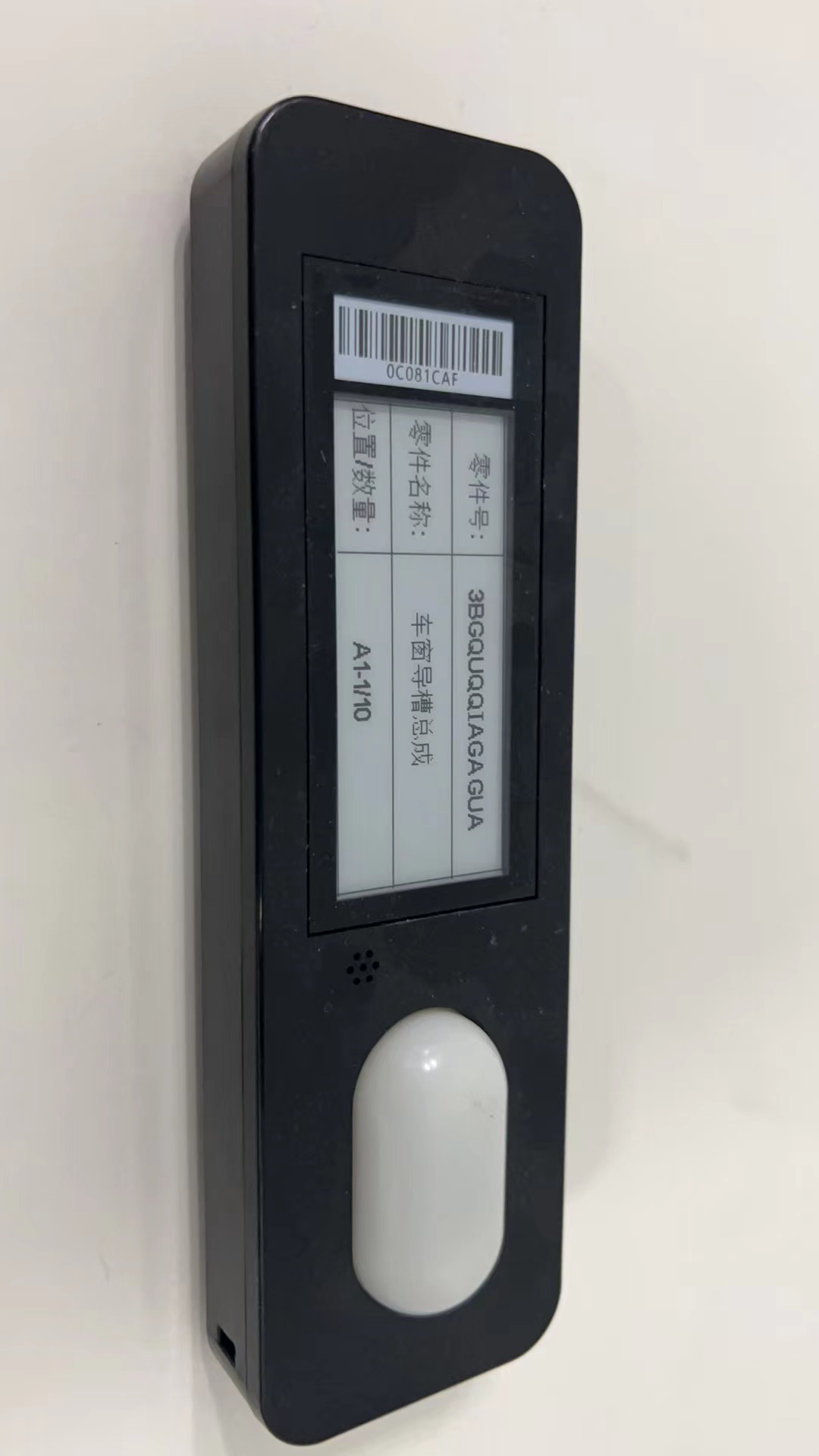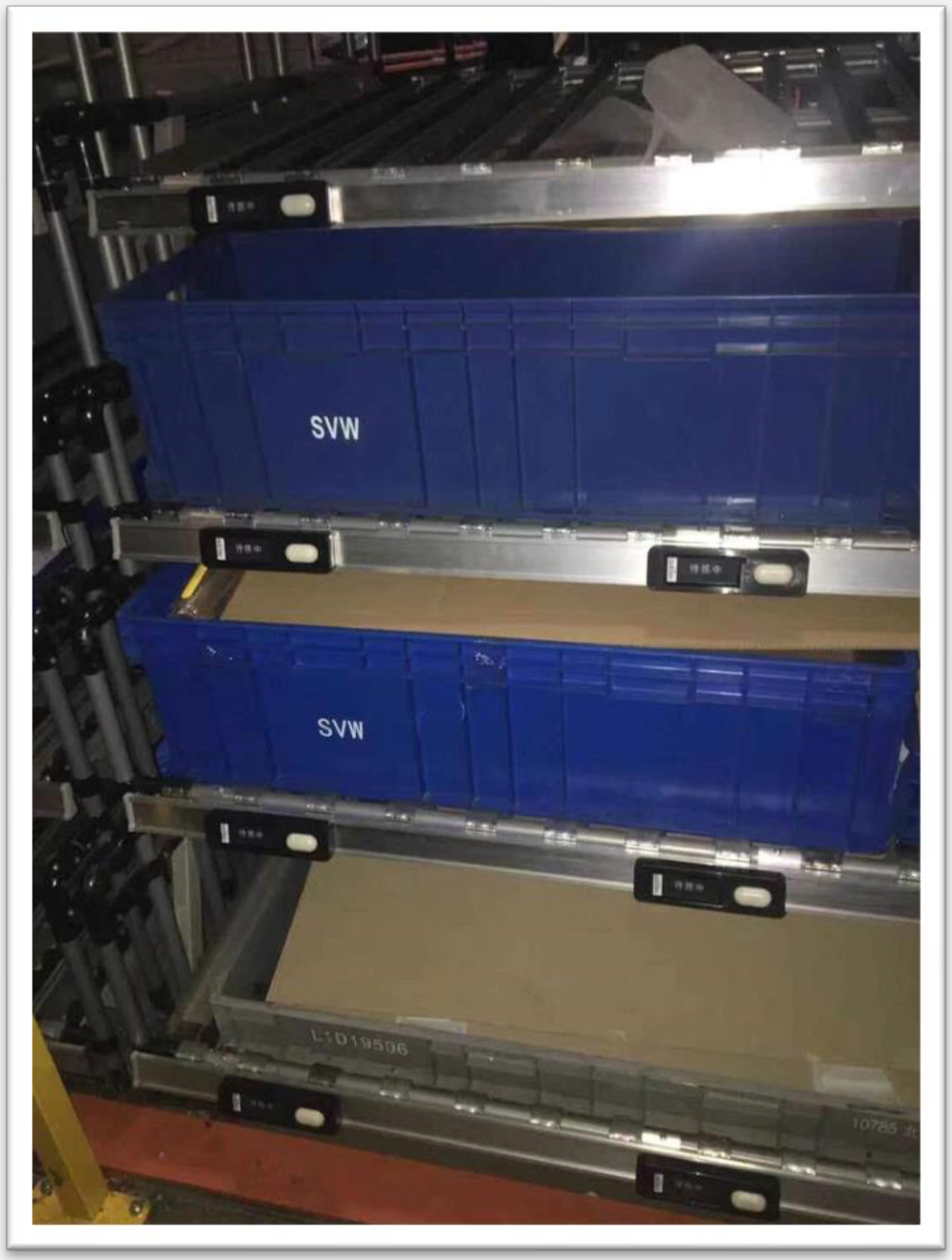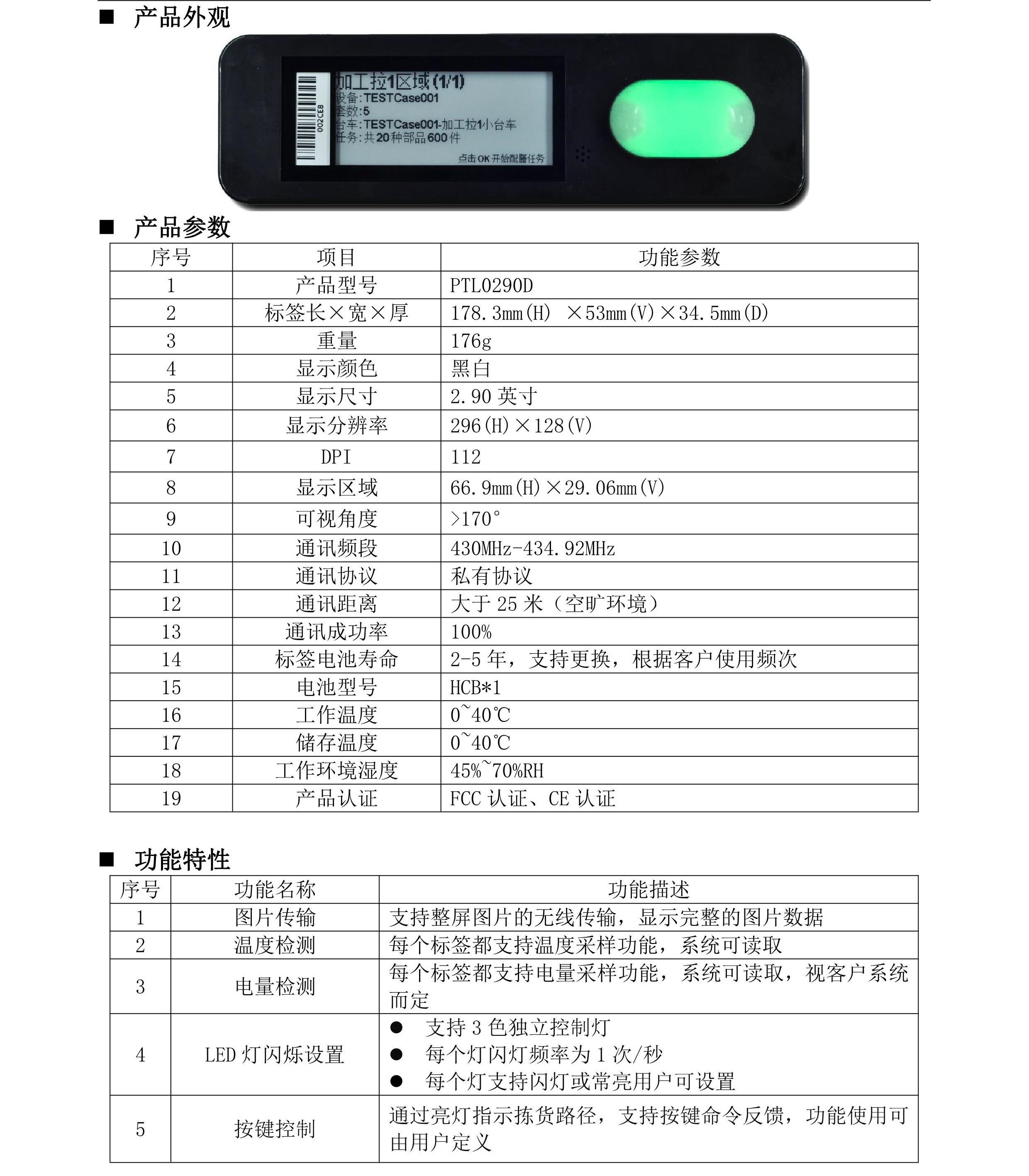|
 |

Background Introduction:
In early 2018, during our market research, we came across a significant insight within the warehouse logistics landscape. Among all the operational stages, the distribution and sorting process emerged as the most demanding, especially in industries where item fragmentation is high, circulation happens at a rapid pace, and there is a wide variety of products, such as retail, pharmaceuticals, and tobacco. The efficiency and effectiveness of the sorting process play a pivotal role in the overall operational capacity of distribution centers. To strategically streamline sorting procedures and elevate operational efficiency, the electronic label picking system emerged as an impactful solution. This solution has garnered widespread adoption across various warehousing and logistics sectors. The electronic label picking system replaces conventional paper-based picking lists with an array of electronic display devices (electronic labels) placed on shelf compartments. These labels indicate the items to be picked and their respective quantities, aiding picking personnel and drastically reducing the time spent visually searching for items. The benefits extend beyond error reduction, encompassing substantial efficiency enhancements. While the electronic label serves as a fundamental electronic component, meeting diverse picking requirements hinges on established processes and control logic offered by the solution. In essence, the electronic label picking system seamlessly fulfills this critical role.
Common Picking Approaches: Pick-to-Light (DPS) and Directed Putaway (DAS)
Principle of Pick-to-Light (DPS) Operation: For each order, the picker manually selects items one by one from their designated storage spots, guided by the order information. The advantage lies in the simplicity: no further actions are needed for the order, and minimal skills are required from the staff. However, it's less efficient for individual order picking.
Principle of Directed Putaway (DAS) Operation: Multiple orders within a specific time frame are grouped into a batch. The quantities of items are combined by category, and warehouse personnel pick items based on their categories, distributing them according to requisition forms. The upside is that multiple orders can be picked concurrently, boosting efficiency. However, this approach demands higher skill levels from personnel and involves splitting and selecting orders post-picking.
Traditional Picking: Regardless of the chosen method, traditional picking involves printing picking lists and manually locating items for selection. During this process, picking operations are guided by storage locations and personal experience. If storage locations and item types are extensive, picking efficiency can be hindered by repetitive and long paths. Additionally, in larger warehouse spaces with extensive picking areas, transportation becomes a challenge.
Intelligent Picking with PTL: This method allows for either single-order picking or the consolidation of multiple orders. Lights guide the picker to the materials that require selection, intelligently optimizing the picking route. Electronic labels equipped with LEDs display material quantities, preventing errors. Labels with screens showcase information like material names, inventory and picking quantities, and storage details.
Back then, PTL devices were all wired, though effective in enhancing distribution and sorting efficiency for various production and distribution companies. However, these devices lacked flexibility and were inconvenient for disassembly and changes. Their deployment necessitated pre-planning during warehouse transformation. PTL applications were in the phase of adapting to the environment. Our team contemplated altering this status quo, envisioning the creation of a wireless PTL picking device. Could this potentially reshape device adaptability? Would PTL picking's flexibility increase, thereby improving the user experience?
Product Development:
After gaining a deep understanding of market demands, our research and development team embarked on the design of a new product. Our designers began by creating multiple sketches and prototypes. Subsequently, they engaged in several rounds of discussions and revisions with the sales team and various stakeholders to ensure the product design perfectly aligned with market needs. Eventually, our product solution emerged as the PTL0290D E-Ink Picking Label. This label features a 2.9-inch E-Ink screen, a tricolor LED light, and a wireless communication module. The communication protocol employs a proprietary encrypted format, ensuring data transmission speeds that meet the successful refreshment of the label within 3 seconds. Additionally, the label's exterior is constructed from impact-resistant and durable materials, tailored to industrial requirements.

After more than six months of intensive design and development, the first-generation PT0290D product underwent initial testing in early 2019. However, the outcomes were not as expected. The fastest transmission speed reached just over 7 seconds, and there was a notable rate of failure in the bulk issuance of labels. Following a period of iterative modifications and extensive testing, PTL0290D finally met the requirement of successful delivery within 3 seconds.
PTL0290D then progressed to the phase of small-scale production. We generously provided all devices from this production batch to our partners for complimentary trials. After a trial period of slightly over two weeks, our partners provided feedback indicating that our labels had no issues with data transmission and were straightforward to install. They appreciated the convenience of easy assembly and disassembly. However, after extinguishing the light using the button, there was an occasional lack of feedback. Consequently, we initiated a recall of this batch of trial labels for in-house modifications and upgrades.
A little over a month later, the modifications were finalized, and by this point, it was already late 2019. This batch of labels was once again sent back to our partners for further trials. After several months of testing, several of our partners felt that our product had reached a stage of preliminary refinement and was ready for market entry. Multiple corporate groups and our own company entered into cooperative agreements regarding this product. PTL0290D officially hit the market in May 2020, transitioning into large-scale production.
PTL0290D impressively showcased its capabilities. Beyond meeting the core speed requirements of our clients, it boasts a battery life lasting up to a year and a half. Its user-friendly assembly and disassembly, extensive communication range, and other attributes garnered acclaim from our customers. It effectively stepped in to replace their existing wired electronic labels.

Section Three: Product Advantages
1.Accelerated Picking: Utilizing electronic label picking significantly speeds up the picking process, enhancing accuracy, efficiency, and cost-effectiveness of picking operations.
2.Paperless Operations: By adopting electronic label picking, there's no need to print outbound orders, sorting lists, and other paper documents. This reduces pre-outbound documentation processing time and conserves paper resources.
3.User-Friendly Operation: Electronic label picking is simple and reliable. After just a brief training of a few minutes, any personnel can operate the system, thereby reducing training costs.
4.Picking Control Software: The picking control software not only provides real-time monitoring of the picking process and records the picking status but also offers real-time replenishment prompts, assists with inventory checks, and seamlessly integrates with logistics and distribution systems.
The adoption of electronic label-assisted picking systems is currently on the rise within China's pharmaceutical logistics industry. Similar application modes are also being explored within other commercial distribution sectors. However, the overall effectiveness is still maturing. The planning and implementation of electronic label-assisted picking systems have effectively combined the unique features of electronic labels with the pharmaceutical logistics industry. This approach holds valuable insights for enterprises with similar operational characteristics. It is believed that the utilization of electronic label-assisted picking systems within China's commercial distribution industry will continue to expand in the future.

